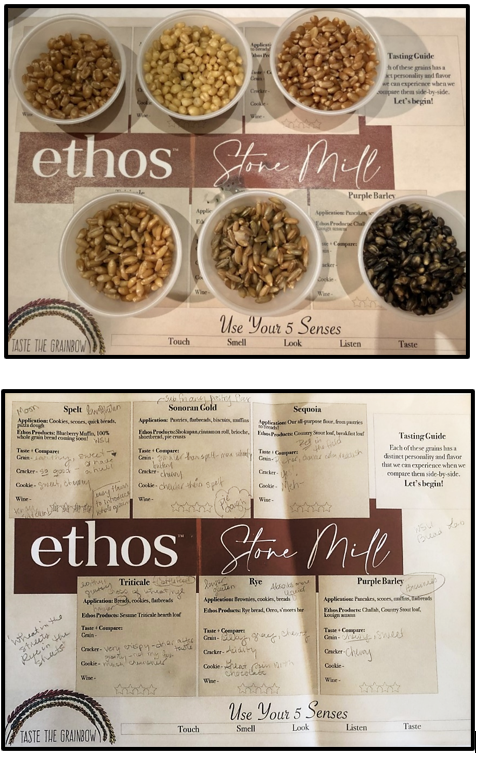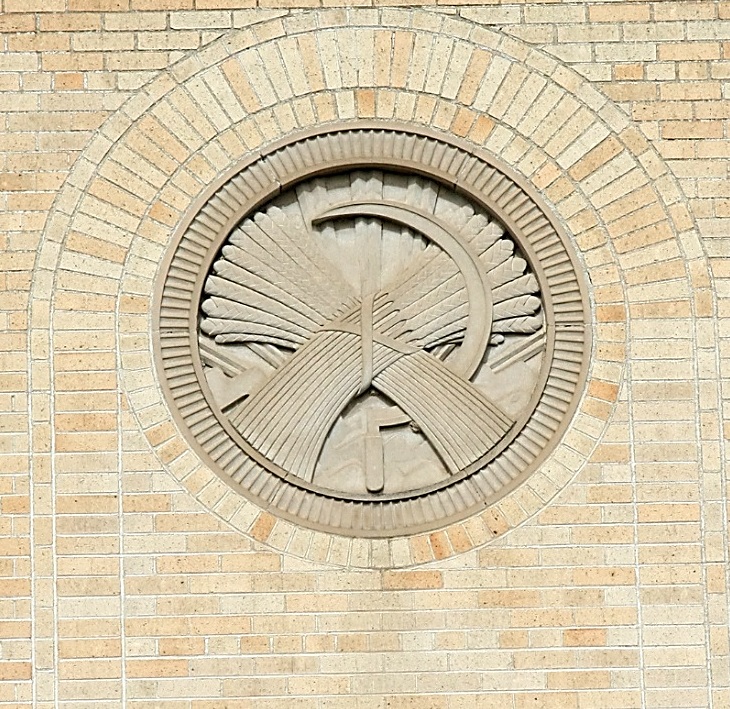“Founding Farmers: Washington, Franklin, and a Heritage of Goodness”
Richard D. Scheuerman “Dinner Under the Dome” Remarks (19 May 2018)
Franklin County History Society
…[A]griculture, is the only honest way wherein man receives a real increase of the seed thrown into the ground, in a kind of continual miracle, wrought by the hand of God in his favor, as a reward for innocent life and virtuous industry. --Benjamin Franklin
I hope, some day or another, we shall become a storehouse and granary for the world. --George Washington to Marquis de Lafayette, June 19, 1788
I am never satiated with rambling through the fields and farms, examining culture and cultivators, with a degree of curiosity which makes some take me to be a fool, and others to be much wiser than I am. --Thomas Jefferson to Marquis de Lafayette, April 11, 1787
America’s founding leaders like Washington, Franklin, and John Adams were schooled in Greek and Latin and knew well the significance of classical allusions to Demeter and grain and harvest so visible in this place [Franklin County Courthouse dome court]. They understood what we call “first principles” of personal and political life, principles that they knew must be renewed in every generation to perpetuate freedom and prosperity. We should note that notable exemplars of these principles in the context of agriculture were many of the Founders’ wives—women like Abigail Adams who actively supervised the plantings and harvests at the couple’s Peacefield Farm while John performed diplomatic duties abroad before a terms as Vice-President and President. We are gathered here because we support the mission of the historical society’s museum, a term derived from the Muses of mythic Greek inspiration. So what are Muses whispering to us these days? Perhaps we could revisit their timeless message of a special heritage for old and young.
Purpose and Meaning
As someone who worked for over forty years in public and private education, I had recurrent reason to muse about purpose and heritage. Each fall for the past many years at Seattle Pacific University, I welcomed incoming cohorts of teacher candidates at the annual graduate studies retreat on beautiful Whidbey Island. I never let that opportunity pass without asking in the first few minutes why they had come. What is the purpose of education, why perpetuate a cultural heritage—through school, a museum, a library, a society? To have a job, to raise test scores, to exhibit interesting old objects? I received many answers ranging from the idealistic (“I love working with kids”) to the extrinsic (“free summers”). While some tended toward first principles, many did not. And I might add that to my mind “loving kids” is an insufficient basis for teaching. Most people anywhere love children, while serious dedication to their present well-being and future world is something rather different.
In this day of debate about the validity of facts, permit me to offer one: Plato, Cincinnatus, Washington, Franklin, Jefferson, and Lincoln—while living in different times and places—would have been in basic agreement on the significance of our cultural heritage and purpose of education. They wrote about it in explicit terms. The value of our cultural heritage, the purpose of education… is to make people good. This simple yet profound truth bears repeating: The value of our cultural heritage, the purpose of education is to make people good. You’d be surprised what quizzical looks I got from the many teacher candidates to whom I explained this fact over the years.
Goodness as Service
Goodness in the classical sense, well known to our nation’s Founders, was not some vague notion of nice feeling. Rather, it was a course of action. While the writings of these thinkers offer slight variations on the theme of goodness, they agree to a remarkable extent on the core qualities of honesty, hard work, and public service. This has important implications for a historical society like this one, and its relevance to society at large and the next generation we seek to engage.
This room is full of exemplars of such a mission. The members, supporters, and volunteers of this organization are living expressions of honest, hard-working public servants. This is the timeless key to purpose and meaning, and goodness. Moreover, it is the antidote to what syndicated columnist Georgie Anne Geyer has termed “meism”—the selfish “what’s in it for me” mentality that threatens to derail the well-being of any community or country. It’s much easier, after all, to sit home and complain about things than it is to get involved, to vote, to attend, to compromise, to work.
While leaders like the Washingtons, Franklins, and Adamses may be more popularly known for democratic ideals, they all found vivid expression of their beliefs in agrarian affairs. They acquired farmland, helped organize rural societies, and wrote extensively about what they called “agricultural improvement.” They found through relationship with the land an incredibly enriching expression of goodness.
Washington devised some of the earliest and most comprehensive schedules for soil amendments to increase the fertility of his lands, Thomas Jefferson helped build some of the country’s first mechanical threshers, and Benjamin Franklin introduced numerous clovers, grains, and other crops to the new nation. New relevance is being found today consistent with their vision and labors to promote sustainability and prosperity. This is exciting! This is meaningful! This is goodness in full measure. Through your abiding support, may past be prologue to make our founders proud, and to inspire our youth to purpose and service.
Progressive change to promote the public good and wellbeing of future generations can be unwisely limited by amnesia as well as nostalgia. Amnesia is to forget about cultural legacies bequeathed by ancestors and society, and nostalgic appeals to life in some halcyon past often overlook the challenges of such times. But memory is a critical discipline, We remember places, mark Scriptures, and listen to elders’ stories in order to foster human flourishing and stewardship of resources and experience for tomorrow. –-RDS





















